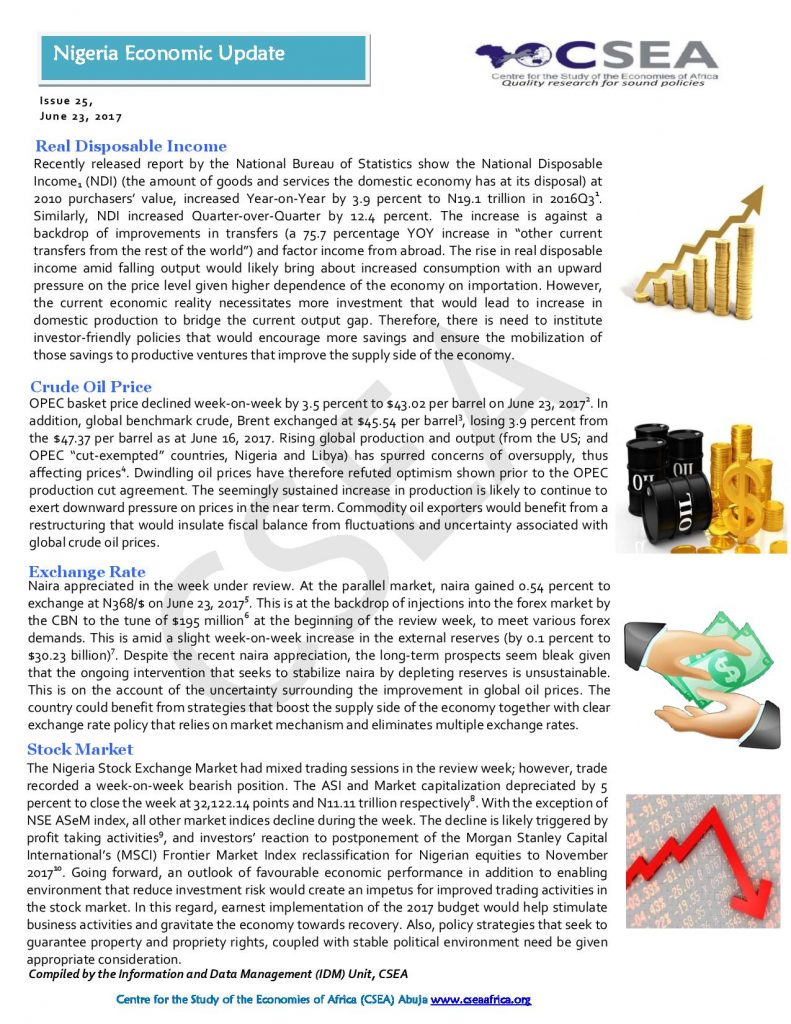Macroeconomic Report & Economic Updates

July 10, 2017
Nigeria Economic Update (Issue 25)
Naira appreciated in the week under review. At the parallel market, naira gained 0.54 percent to exchange at N368/$ on June 23, 20175. This is at the backdrop of injections into the forex market by the CBN to the tune of $195 million at the beginning of the review week, to meet various forex demands. This is amid a slight week-on-week increase in the external reserves (by 0.1 percent to $30.23 billion). Despite the recent naira appreciation, the long-term prospects seem bleak given that the ongoing intervention that seeks to stabilize naira by depleting reserves is unsustainable.
Related
Nigeria Economic Update (Issue 42)
The
NSE market indices recorded a bear market rally for the third consecutive week
in September. Specifically, All-share index and Market Capitalization increased
marginally by 0.31 percent to close at 28,335.40 points and N9.73 trillion
respectively on September 30, 2016. Major drivers of the rally include;
increased trade-volume of financial, agricultural and consumer-goods
securities. The continued rise in market indices may be connected to a
sustained investor confidence in the agricultural and financial sectors on the
account of the ongoing activities of the government and the CBN to stabilize
the sectors.
